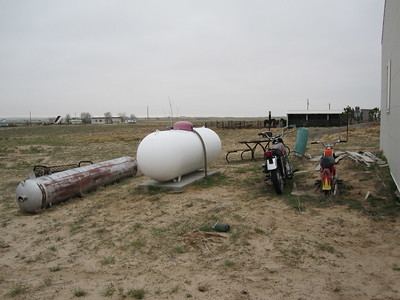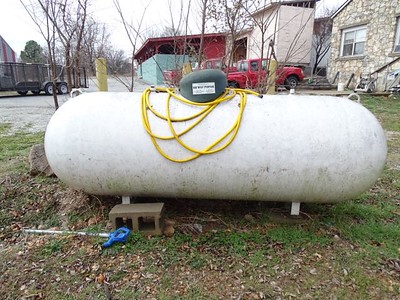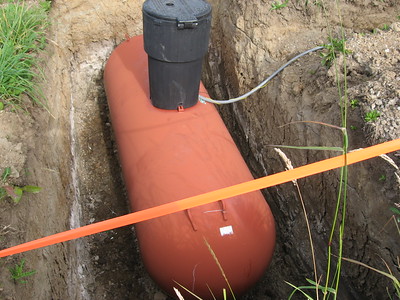
The cost of a 250-gallon propane tank can vary depending on several factors, including the location, brand, and dealer. On average, a new 250-gallon propane tank can cost anywhere from $800 to $1,500, but prices can be higher or lower based on the factors mentioned. It is best to get quotes from multiple dealers to find the best price for a 250-gallon propane tank.
There are a few things to keep in mind when purchasing a propane tank.
First, you’ll want to decide what size you need. A 250-gallon tank is a good middle-of-the-road option – it’s not too big and not too small. Second, you’ll need to decide where you want to put it. These tanks are heavy, so you’ll need to make sure that the location can support the weight. Finally, you’ll need to decide how you’re going to power it. Most propane tanks use electricity to run, so you’ll need to make sure that your home is wired for it.
Once you have all of that figured out, then you can start shopping around for the best deal on a 250-gallon propane tank. You can check with your local home improvement store or look online. Just be sure to compare prices and read reviews before making your final decision.
Read related article: How Long Will a 250-Gallon Propane Tank Last?
Other Fees to Consider
When considering the purchase of a 250-gallon propane tank, it’s crucial to factor in various additional costs beyond the initial purchase price. These include installation costs, delivery fees, maintenance and inspection costs, and potential permits or local regulation fees. Here’s a detailed breakdown of each:
Installation Costs
- Professional Installation Services:
- Hiring qualified technicians to ensure safe and proper installation.
- Costs can vary based on complexity of installation and local labor rates.
- Site Preparation:
- Preparing the location for the tank, which might include landscaping or constructing a concrete pad.
- Costs depend on the extent of preparation required.
- Connecting to Appliances or Systems:
- Expenses involved in connecting the tank to your home’s heating system, gas appliances, or generators.
- Involves labor and possibly additional materials.
Delivery Fees
- Transportation of the Tank:
- The cost to transport the tank from the supplier to your location.
- Varies with distance and accessibility of the installation site.
- Handling and Unloading:
- Fees for the equipment and labor required to safely unload and position the tank at your property.
Maintenance and Inspection Costs
- Regular Maintenance:
- Routine upkeep to ensure the tank operates safely and efficiently.
- Includes checking connections, preventing rust, and repainting.
- Professional Inspections:
- Periodic inspections by certified professionals to comply with safety standards.
- Inspection frequency and costs can vary by region and tank condition.
Potential Permits or Local Regulation Fees
- Permits:
- Costs for any permits required by local authorities for installation and operation of a propane tank.
- Research local regulations to understand the permit requirements and associated costs.
- Compliance with Local Regulations:
- Expenses related to ensuring the tank and its installation comply with local codes and regulations.
- May include costs for additional safety measures or modifications.
Summary
- Overall Cost Implications: These additional costs can significantly impact the total investment in a propane tank.
- Importance of Budget Planning: It’s essential to account for these expenses in your budget planning.
- Seeking Professional Advice: Consulting with professionals can provide a more accurate estimate of these additional costs based on your specific circumstances and location.
By understanding and preparing for these additional costs, buyers can make a more informed decision and ensure a safe and compliant propane tank installation.
Read related article: How Long Will 250-Gallon Propane Tank Run a House Generator?
Where Can You Buy a 250-Gallon Propane Tank?
There are several places where you can buy a 250-gallon propane tank. Some options include:
- Propane suppliers: Many propane companies offer a variety of tank sizes for sale, including 250-gallon tanks. You can search for local propane suppliers in your area and contact them to ask about availability and pricing.
- Hardware stores: Some hardware stores, such as Home Depot and Lowe’s, may carry propane tanks in a variety of sizes, including 250-gallon tanks. You can check with your local store to see if they have the size and type of tank that you need.
- Online retailers: Several online retailers sell propane tanks, including Amazon and eBay. You can browse their selection and compare prices from the comfort of your own home.
- Used tank dealers: If you are looking for a more affordable option, you might consider purchasing a used propane tank. Several used tank dealers specialize in selling refurbished tanks at a lower cost.
It is a good idea to shop around and compare prices from multiple sources before making a purchase. You should also carefully consider your needs and budget to ensure that you are getting the right tank for your needs.
How Can You Buy a 250-Gallon of Propane Tank?
When purchasing a 250-gallon propane tank, it’s crucial to make an informed decision to ensure safety, efficiency, and cost-effectiveness. Here are some key buying tips to consider:
1. Choosing the Right Tank
- Size Considerations:
- Assess your propane usage to determine if a 250-gallon tank meets your needs. Consider factors like climate, the size of your home, and the number of appliances using propane.
- If your usage is relatively low, a smaller tank might be more economical. Conversely, high usage might warrant a larger tank.
- Material and Durability:
- Common materials include steel and aluminum. Steel tanks are more prevalent and generally more durable, but aluminum tanks are lighter and resist corrosion better.
- Consider the climate and environment where the tank will be located. Harsher climates may require more durable materials.
- Brand Reputation:
- Research different brands for reliability and customer satisfaction. Look for brands with a proven track record.
- Check for any recalls or widespread issues with specific brands.
2. Finding Reputable Sellers or Suppliers
- Research and Reviews:
- Look for online reviews and testimonials from previous customers.
- Check with the Better Business Bureau or similar organizations for ratings and any lodged complaints.
- Ask for Recommendations:
- Get recommendations from friends, family, or neighbors who have purchased propane tanks.
- Consult with local propane suppliers or HVAC professionals for their suggestions.
- Verify Certifications:
- Ensure the seller or supplier is certified and adheres to national and local safety standards.
- Ask about the staff’s training and experience in handling and installing propane tanks.
3. Warranties and Return Policies
- Warranty Coverage:
- Check the length and coverage of the warranty. A longer warranty may indicate better quality and manufacturer confidence.
- Understand what the warranty covers. Some may cover only certain components or specific types of damage or defects.
- Return Policy:
- Understand the return policy, including any restocking fees or conditions for returns.
- It’s essential to know your options if the tank doesn’t meet your expectations or if there are issues post-purchase.
- Service Agreements:
- If purchasing from a propane supplier, inquire about service agreements or maintenance plans. These can provide added value and peace of mind.
Summary
- Informed Decision Making: Being well-informed about the tank’s specifications, the reputation of the seller, and the protections offered by warranties and return policies is crucial.
- Safety and Compliance: Prioritize safety and compliance with local regulations in your decision-making process.
- Cost vs. Quality: Balance the initial cost with long-term reliability and service. Cheaper options might not always be cost-effective in the long run.
Following these tips can help ensure that you purchase a propane tank that is suitable, reliable, and a good investment for your specific needs and circumstances.
Choose Between Above or Below-Ground Propane Tank
The choice between above-ground and below-ground installation for a propane tank depends on several factors:
- Cost: Above-ground tanks tend to be less expensive to install, but below-ground tanks can be more cost-effective in the long run due to improved energy efficiency.
- Space: Above-ground tanks take up more space and may not be a suitable option for properties with limited outdoor space. Below-ground tanks are hidden from view and do not take up valuable outdoor space.
- Aesthetics: Above-ground tanks are visible and can detract from the appearance of a property, while below-ground tanks are hidden and do not affect the appearance of a property.
- Safety: Both above-ground and below-ground tanks can be safe when properly installed and maintained. Above-ground tanks may be more susceptible to damage from vehicles or other impacts, while below-ground tanks can be more vulnerable to flooding or leaks.
The choice between above-ground and below-ground installation will depend on individual circumstances, such as cost, space, aesthetics, and safety concerns. It’s recommended to consult a propane supplier or licensed contractor to determine the best option for your needs.
Decide Whether You Need a Brand New Tank or a Used Tank
Deciding whether to purchase a brand new or used 250-gallon propane tank depends on several factors:
- Budget: New tanks are generally more expensive, but a used tank may not be in good condition and may require additional repairs or maintenance.
- Quality: New tanks come with a manufacturer’s warranty and are guaranteed to be in good working order, while used tanks may have unknown issues or defects.
- Condition: The condition of a used tank can be difficult to determine, and it may have leaks, corrosion, or other issues that could compromise its safety or performance.
- Maintenance history: The maintenance history of a used tank is often unknown, making it difficult to determine if it has been properly maintained and if it is safe for use.
- Environmental impact: New tanks have a smaller environmental impact than used tanks, as they are made from new materials and do not require the disposal of an existing tank.
If cost is a concern, a used tank may be an option, but it is important to thoroughly inspect it and determine its condition and maintenance history before making a purchase. If quality and safety are priorities, a new tank is likely the best option. It is recommended to consult a propane supplier or licensed contractor to determine the best option for your needs.
To Make a Conclusion
The cost of a 250-gallon propane tank can vary based on several factors, including location, brand, dealer, and installation costs. On average, a new 250-gallon propane tank can cost anywhere from $800 to $1,500, while a used tank may be available for a lower cost. To save money, it is recommended to shop around for the best price and take advantage of discounts and promotions.
When deciding between a new and used tank, it is important to consider factors such as budget, quality, condition, maintenance history, and environmental impact. A new tank offers the benefits of a manufacturer’s warranty, guaranteed quality, and a lower environmental impact, while a used tank may be a more cost-effective option. Ultimately, the choice between a new and used tank will depend on individual circumstances, and it is recommended to consult a propane supplier or licensed contractor to determine the best option for your needs.

Mike is an experienced propane technician with over 15 years of professional experience in the field. He has dedicated his career to helping customers with their propane needs, from installation to maintenance and repair. Together with Jeremy, he co-founded this website to provide useful information and guidance to customers seeking reliable propane services.



